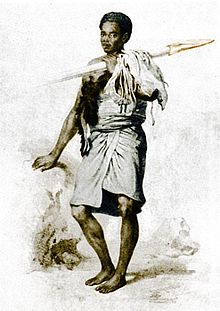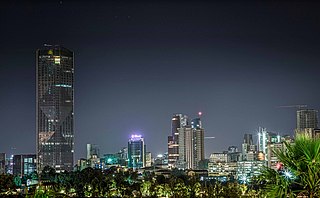
Addis Ababa is the capital and largest city of Ethiopia. In the 2007 census, the city's population was estimated to be 2,739,551 inhabitants. Addis Ababa is a highly developed and important cultural, artistic, financial and administrative centre of Ethiopia.

Menelik II, baptised as Sahle Maryam was king of Shewa from 1866 to 1889 and Emperor of Ethiopia from 1889 to his death in 1913. At the height of his internal power and external prestige, the process of territorial expansion and creation of the modern empire-state was completed by 1898.

RasMakonnen Wolde Mikael Wolde Melekot, or simply Ras Makonnen, also known as Abba Qagnew, was an Ethiopian royal from Shewa, a military leader, the governor of Harar, and the father of future Emperor Haile Selassie. Described by Nikolai Gumilev as “one of the greatest leaders of Abyssinia”, he served in the First Italo-Ethiopian War, playing a key role at the Battle of Adwa.

The birr is the primary unit of currency in Ethiopia. It is subdivided into 100 santims.

Yohannes IV was Emperor of Ethiopia from 1871 to his death in 1889 at the Battle of Gallabat, and king of Tigray from 1869 to 1871. During his reign he successfully defended Ethiopia against a large scale Egyptian invasion.

Debre Birhan is a city in central Ethiopia. Located in the Semien Shewa Zone of Amhara Region, about 120 kilometers north east of Addis Ababa on Ethiopian highway 2, the town has an elevation of 2,840 meters, which makes it the highest town of this size in Africa. It was an early capital of Ethiopia and afterwards, with Ankober and Angolalla, was one of the capitals of the kingdom of Shewa. Today, it is the administrative center of the North Shewa Zone of the Amhara Region.
The National Bank of Ethiopia is the central bank of Ethiopia. Its headquarters are in the capital city of Addis Ababa. Mamo Mihretu is the current governor of the bank.
Articles related to Ethiopia include:

The Ethiopian Empire, also formerly known by the exonym Abyssinia, or simply known as Ethiopia, was a sovereign state that historically encompasses the geographical area of present-day Ethiopia and Eritrea from the establishment of the Solomonic dynasty by Yekuno Amlak approximately in 1270 until the 1974 coup d'etat by the Derg, which dethroned Emperor Haile Selassie. By 1896, the empire incorporated other regions such as Hararghe, Gurage and Wolayita, and saw its largest expansion with the federation of Eritrea in 1952. Throughout much of its existence, it was surrounded by hostile forces in the African Horn; however, it managed to develop and preserve a kingdom based on its ancient form of Christianity.
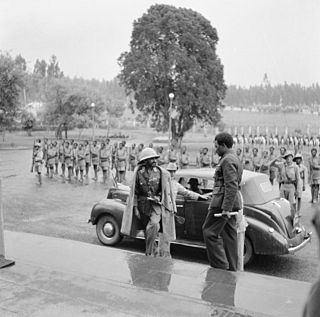
The history of Addis Ababa, capital of Ethiopia, formally begins with the founding of the city in the 19th century by Ethiopian Emperor Menelik II and his wife Empress Taytu Betul. In its first years the city was more like a military encampment than a town. The central focus was the emperor’s palace, which was surrounded by the dwellings of his troops and of his innumerable retainers. In the 1920s, Addis Ababa experienced a significant economic upturn, marked by a surge in the number of middle-class-owned buildings, including stone houses furnished with imported European furniture. The middle class also introduced newly manufactured automobiles and expanded banking institutions. Urbanization and modernization persisted during the Italian occupation, guided by a masterplan aimed at transforming Addis Ababa into a more "colonial" city, a trajectory that continued beyond the occupation. Subsequent master plans, formulated from the 1940s onward with the input of European consultants, focused on the development of monuments, civic structures, satellite cities, and the inner city.
Were Ilu is a town in north-central Ethiopia. Located in the Debub Wollo Zone of the Amhara Region, this town has a latitude and longitude of 10°36′N39°26′E. From the 1870s, Were Ilu had a Thursday market.

Ethiopia is one of the oldest countries in Africa; the emergence of Ethiopian civilization dates back thousands of years. Abyssinia or rather "Ze Etiyopia" was ruled by the Semitic Abyssinians (Habesha) composed mainly of the Amhara, Tigrayans and the Cushitic Agaw. In the Eastern escarpment of the Ethiopian highlands and more so the lowlands were the home of the Harari/Harla that founded Sultanates such as Ifat and Adal and the Afars. In the central and south were found the ancient Sidama and Semitic Gurage, among others.
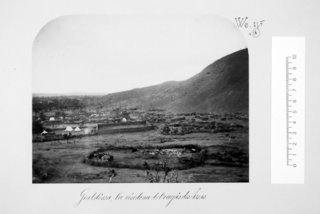
Jaldessa is a village in eastern Ethiopia. Located in the Shinile Zone of the Somali Region of Ethiopia.
Workneh Eshete or Azaj Warqnah Ishete, also known as Charles Martin was an Ethiopian physician and politician. He was the first Ethiopian educated as a medical doctor and led the Ethiopian diplomatic mission to the United States in 1927, which negotiated a contract to build a dam on the upper Abay River; and, beginning in 1934, he served as Ethiopia's Minister to the United Kingdom.

Slavery in Ethiopia existed for centuries, going as far back as 1495 BC and ending in 1942. There are also sources indicating the export of slaves from the Aksumite Empire. The practice formed an integral part of Ethiopian society. Slaves were traditionally drawn from the Nilotic groups inhabiting Ethiopia's southern hinterland and Oromos. War captives were another source of slaves, though the perception, treatment and duties of these prisoners was markedly different. Although religious law banned Christian slave masters from taking part in the slave trade, many Muslim Ethiopian slave traders took part in the Arab slave trade. Slaves usually served as concubines, bodyguards, servants and treasurers.
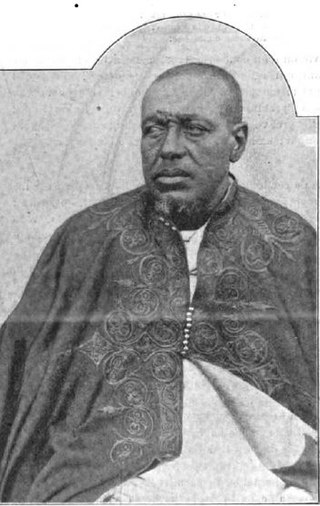
Mersha Nahusenay was an Ethiopian reformist and pioneer of change who made important contributions to the modernization and independence of Ethiopia. One of the closest advisors to Emperor Menelik II, he went on to become the first governor of Dire Dawa, and surrounding areas (1902–1905). Prior to that he was governor of the strategic and frontier district of Jaldessa (Gildessa) and its environ where he also held the key position of Head of Customs. His public career lasted over three decades from the time of Menelik II until the reign of Haile Selassie. Mersha understood French and was open to European ideas of progress earning him admiration abroad. His most enduring legacy is perhaps the supervision of the day to day activities of the construction, maintenance and security of the first railroad which he oversaw at the request of Menilek. Mersha belongs to a generation of Ethiopians who took advantage of the relative stability of the late 19th – early 20th century to implement a series of wide-ranging political, military, economic and social reforms, paving the way to the founding of present-day Ethiopia.
A neftenya was the name given to Emperor Menelik II's warriors, who were primarily of Shewan Amhara origin, that collected customs and taxes for the Imperial Ethiopian government. In its literal meaning, neftenya, referred to riflemen in the Imperial Ethiopian Army who were known to have settled in Ethiopia's peripheral regions, including parts of present-day Oromia Region, the SNNPR Region, Gambela Region and the Benishangul-Gumuz Region from the late 19th century onwards. The origin of this term lies from the fact that these soldiers, i.e. "neftenya", were granted land on these newly conquered territories, including the services of the indigenous people on these lands, as rewards for their services.
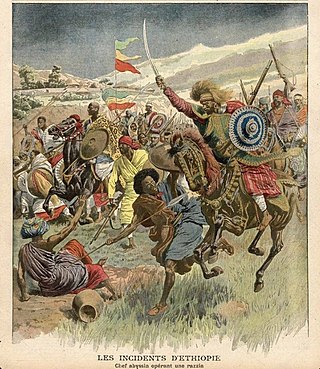
Menelik's conquests, also known as the Agar Maqnat, were a series of wars and conquests carried out by Menelik II of Shewa to expand the Ethiopian Empire.
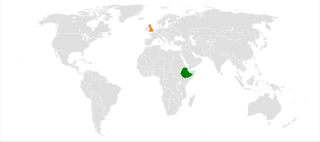
Ethiopia–United Kingdom relations are the bilateral relations between Ethiopia and the United Kingdom. Currently, Ethiopia has an embassy in London and United Kingdom has an embassy in Addis Ababa. Historically, their relations traced over centuries covered a range of areas including, but not limited to, trade, culture, education and development cooperation. The UK is the first country to open its embassy in Addis Ababa. Ethiopia is the first African country to open an embassy in London.

This is chronological list about the Ethiopian Empire, an empire dominated the present-day Ethiopia and Eritrea from the beginning of establishment of Solomonic dynasty by Emperor Yekuno Amlak in 1270 to fall of monarchy on 21 March 1975 under Haile Selassie.
